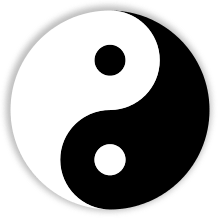Taoism in Vietnam

| Part of a series on |
| Taoism |
|---|
 |
|
Deities |
|
Holy places |
|
Organisations |
| Portal Taoism |
Taoism in Vietnam (Vietnamese: Đạo giáo Việt Nam) is believed to have been introduced into the country during the first Chinese domination of Vietnam.[1] Under Lý Dynasty King Lý Nhân Tông (1072-1127), the examination for the recruitment of officials consisted of essays on the "three doctrines" (Confucianism, Buddhism, and Taoism).[1]
Taoism in its pure form is no longer practiced in Vietnam, but elements of it have been absorbed into the Vietnamese folk religion.[2] Taoism has also influenced the Caodaist and Dao Mau[3] religions in Vietnam.
According to Professor Liam Kelley during the Tang dynasty native spirits were subsumed into Daoism and the Daoist view of these spirits completely replaced the original native tales.[4] Buddhism and Daoist replaced native narratives surrounding Mount Yên Tử 安子山.[5]
References
- 1 2 Religion in Vietnam
- ↑ Bryan S. Turner; Oscar Salemink (25 September 2014). Routledge Handbook of Religions in Asia. Routledge. pp. 240–. ISBN 978-1-317-63646-5.
- ↑ Tu Anh T. Vu, 2006, p. 30
- ↑ https://leminhkhai.wordpress.com/2015/11/26/the-daoist-appropriationsubordination-of-bach-hac-spirits/
- ↑ https://leminhkhai.wordpress.com/2015/11/21/elephant-mountain-and-the-erasure-of-viet-indigeneity/
- Tu Anh T. Vu. Worshiping the Mother Goddess: The Dao Mau Movement in Northern Vietnam. In: Explorations in Southeast Asian Studies, vol. 6, no. 1, Spring 2006.